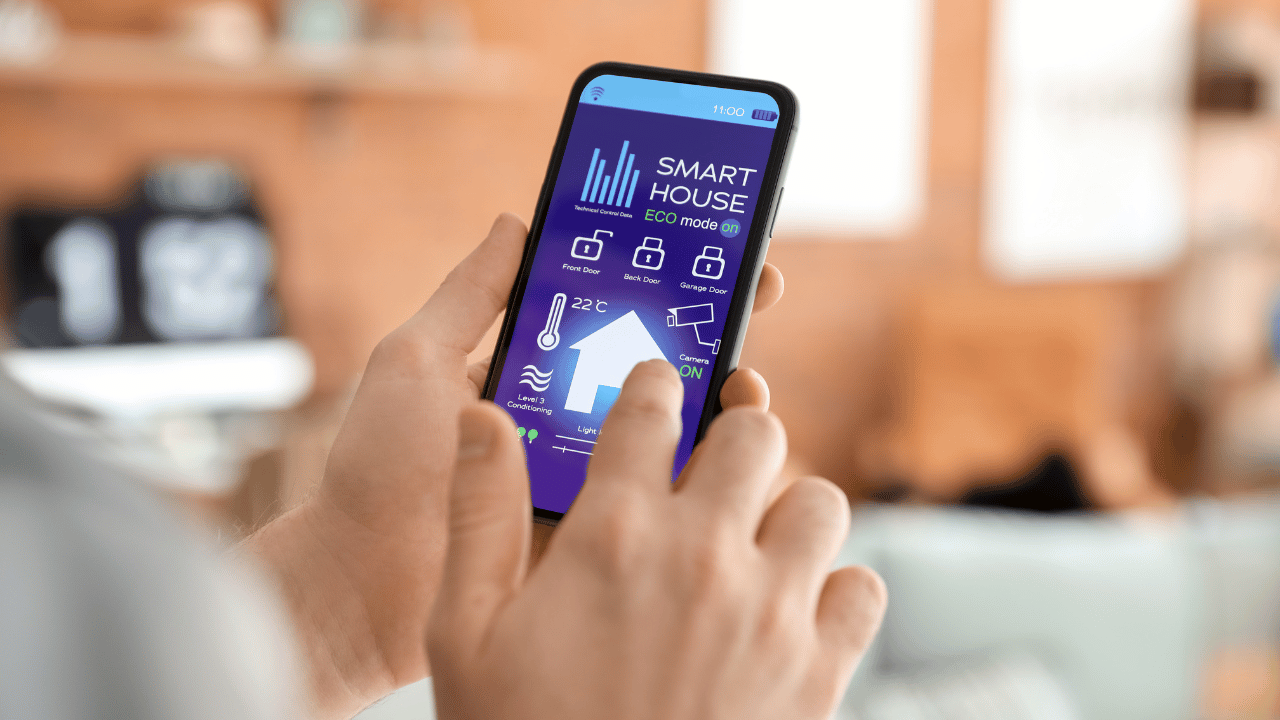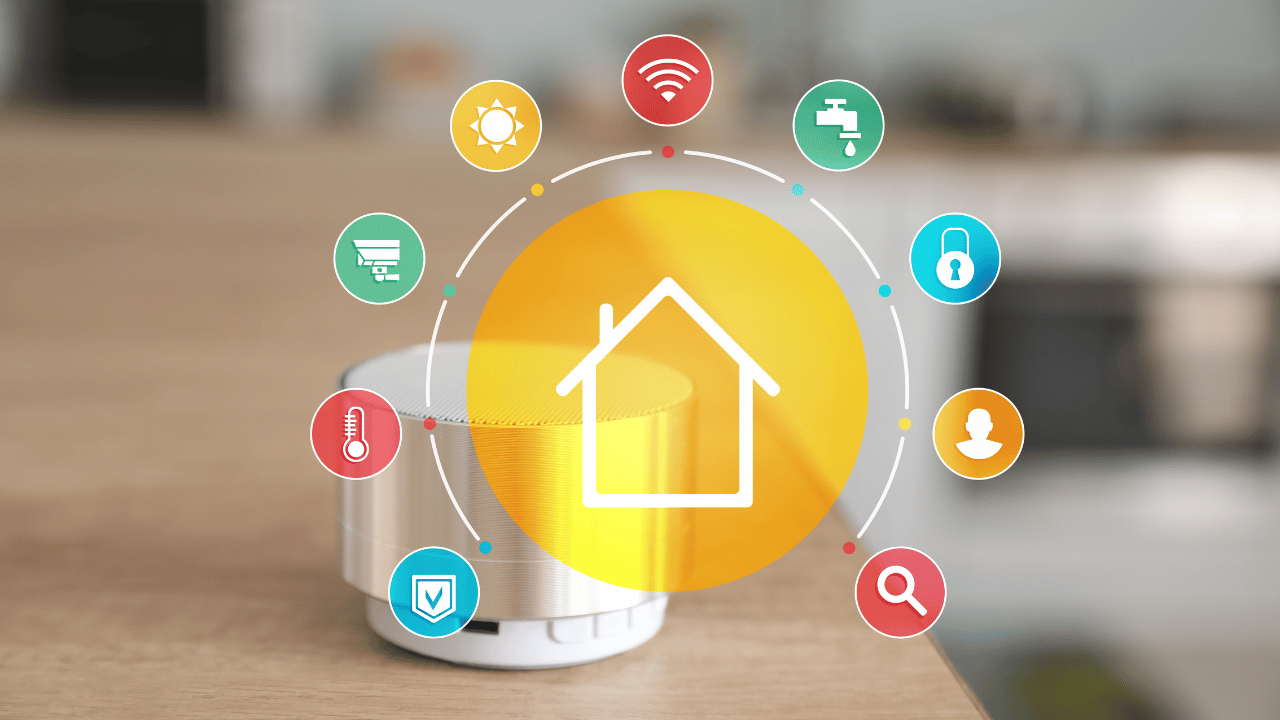Last Updated on September 11, 2023 by Pro Handyman Australia – Editorial Team
In today’s digitally driven age, personal assistants such as Google Assistant, Amazon Alexa, and Siri have rapidly gained prominence. Their influence isn’t just limited to smart home speakers; they have seamlessly integrated into everyday devices like phones and tablets. Each one brings its unique set of capabilities and features to the table.
For anyone trying to ascertain which personal assistant might be the ideal pick, it’s essential to consider your device preferences and specific needs. If you’re leaning towards a particular assistant and wish to delve deeper, we’ve curated detailed features on each to assist you in your decision-making process.
Why you need Smart Home Assistance?

In today’s fast-paced digital era, having a smart home assistant in your home can be a game-changer. These devices streamline daily tasks, elevating your home’s efficiency and convenience to unprecedented levels. With just a simple voice command, you can control your home’s lighting, thermostat, and entertainment systems, saving time and reducing manual effort. Moreover, they offer a helping hand in setting reminders, updating shopping lists, or even answering trivia during family dinners. Beyond convenience, smart home assistants enhance security by integrating with surveillance systems, allowing homeowners to monitor their premises with ease. By adopting this technology, you not only embrace modern living but also invest in comfort, efficiency, and peace of mind.
Deciphering the Big Three: Amazon Alexa, Google Assistant, and Siri

Amazon Alexa: The Pioneer in Personal Assistants
- History and Popularity: Amazon Alexa has emerged as one of the most popular personal assistants in recent times. Its journey began in 2014 with its integration into the original Echo speaker. Today, owing to an expanding range of Echo devices, Alexa has marked its presence in millions of households worldwide.
- Features and Capabilities: Alexa is versatile and personalizes its responses to commands like controlling compatible smart home devices, music, setting timers, reminders, and much more. Its signature wake word, “Alexa,” provides a personal touch, setting it apart from the generic greetings of other assistants.
- Compatibility: One of Alexa’s distinguishing features is its extensive compatibility with apps and services, surpassing both Google and Apple in this domain. Its presence is not limited to Echo devices but extends to third-party speakers, Amazon Fire devices, select Fitbit gadgets, and even some vehicles. Innovative implementations have seen Alexa integrated into microwaves, clocks, and even teddy bears.
Google Assistant: The Dynamic Intellectual
- Origins and Advancements: Introduced in 2016 as a refined version of Google Now, Google Assistant stands out with its intelligent and dynamic features. It offers a seamless blend of personalized responses by assimilating information from various Google services.
- Unique Features: Apart from common functionalities, Google Assistant excels in understanding context, voice differentiation, and introducing features like Continued Conversation and Interpreter Mode. Essentially, it aids in managing smart home devices, accessing calendar info, real-time translations, setting reminders, and more.
- Device Integration: Google Assistant’s footprint extends beyond Google’s own product range. It’s found in third-party speakers, smart displays, Android devices, and even vehicles supporting Android Auto. With the Google Assistant app, iOS users can also experience its capabilities.
Siri: The Witty Veteran
- Inception and Evolution: Siri, the pioneer among personal assistants, started its journey as a standalone app in 2010. After Apple’s acquisition of the company that developed Siri, it became an integral part of Apple’s ecosystem from 2011.
- Distinct Qualities: Siri is not just about efficiency; it’s also about entertainment. It showcases a sense of humor that its counterparts might not possess, and understands natural language, making interactions smooth. Siri’s functionalities span across controlling smart devices, making calls, setting reminders, online information retrieval, and even sharing a good joke.
- Device Restriction: Unlike its competitors, Siri operates exclusively within the Apple universe. Its services can be availed on iPhones, iPads, Apple Watch, AirPods, Mac devices, the HomePod speaker, and vehicles equipped with Apple CarPlay. However, using it in cars necessitates an iOS device.
Decoding Digital Assistants in Home Entertainment
Integration with Home Entertainment Systems Virtual assistants have seamlessly woven themselves into our home entertainment ecosystem, making it simpler to control various devices with voice commands. For instance, Alexa boasts impressive compatibility with Amazon’s range of Fire TV devices, facilitating actions such as launching apps, maneuvering through video timelines, and managing playbacks. Google Assistant presents a similar proficiency, especially with devices connected via Chromecast. However, it’s worth noting that Google’s suite of supported services is relatively limited, requiring some apps to be linked using a smartphone. Both Alexa and Google Assistant, with the help of third-party tools like Logitech’s Harmony Hub, can manage multiple devices efficiently.
Siri’s capabilities, in this context, are somewhat restricted. Although recent updates have enhanced its functionality, allowing control of music and podcasts on Apple TV or other AirPlay devices, it falls short in managing other operations. For instance, turning devices on/off, launching applications, or video playback are outside Siri’s purview. However, the latest Apple TVs come with Siri integrated into the remote, offering users more expansive control, albeit at the cost of third-party integration and the inconvenience of always reaching for the remote.
Virtual Assistants and Movie Tickets Booking Diving deeper into the realm of entertainment, an attempt to book movie tickets for a popular title highlights the current state of virtual assistant capabilities. Alexa, through the Atom Tickets skill, although slightly tedious, does eventually get the job done, especially appreciating its memory of where the process was left off, even after interruptions. It even shows prowess in handling theaters with designated seating options.
Siri, specifically on the HomePod, was unable to assist with ticket booking. However, on the iPhone, Siri proved more competent, guiding through a series of screens and eventually leading to the Fandango app. Google Assistant was adept at fetching showtimes for nearby theaters but ultimately required a transition to a mobile device for completing the purchase using the preferred movie-ticketing application. While Google’s methodology is a commendable step forward, we’re not quite at the point where movie tickets can be effortlessly booked using just our voice.

Exploring Culinary Options
In the realm of dining and cuisine, I initiated several commands to the three assistants to understand their capabilities. All the assistants efficiently recommended Indian restaurants in the vicinity, complete with relevant details such as location, ratings, and price range. However, they fell short when tasked with placing an order for Chinese food. While some listed nearby restaurants, others, like Alexa, mistakenly tried to order food products from Amazon. Notably, there was an instance where Google seemed hung up on a prior Indian food query but later rectified this, presenting a list of Chinese eateries.
Reserving a Dining Experience
When it came to restaurant reservations, Alexa, despite sometimes being a tad tedious, managed to get the task done. Siri, on the iPhone, also facilitated reservations, albeit with a bit of interaction and by utilizing OpenTable. In contrast, Google Home directed me to the Assistant app on my smartphone, and disappointingly, Siri on the HomePod outrightly declined the request.
Unearthing Recipes When I inquired about a “chocolate chip cookie recipe”, Google Assistant exceeded expectations by providing a comprehensive step-by-step guide. Alexa was a close second, offering an array of recipes, listing ingredients, and allowing access to the recipe through its app. Siri on the HomePod was unable to assist, and on the iPhone, Siri merely directed me to a web search.
Deciphering Online Shopping with Assistants

Voice-Powered Purchases The concept of voice-driven shopping is intriguing, but its execution sometimes falls short. Given Alexa’s deep integration with Amazon, it should ideally excel in this department. In general, Alexa processes most shopping requests by searching Amazon and adding the corresponding item to the cart. While it managed the “order some more paper towels” request smoothly, its response became confusing when I sought a copy of the video game “Destiny 2”. Notably, I had to finalize my order using the Amazon mobile app.
Google Assistant performed similarly to Alexa, and I appreciated its initiative to elucidate how online ordering functions. While it successfully added items to my cart and notified me about free shipping eligibility, it got ensnared in a continuous terms of service loop, necessitating completion of the order through its app.
Unfortunately, Siri lagged behind its counterparts. On the HomePod, product-related queries yielded no results, and Siri on the iPhone didn’t fare much better.
Assistant-Aided Communication
Reaching Out through Virtual Help It’s a relief to know that when you want a human touch, these virtual assistants can help bridge the connection. Alexa facilitates calls and messages to other Alexa users, be it audio or text, and can even dial any contact number stored in your phone. Interestingly, it can send standard text messages, provided the user has the Android-based Alexa app. For those with an Echo Show, video calls become a possibility.
Google Assistant provides the option to call contacts, though one must set it up to display a Google Voice number or another number. Text messaging, however, requires a workaround. A standout feature is its capability to make international calls if linked with certain Google accounts.
Siri on the HomePod allows calls and texts, but the text interface can be intricate if multiple communication methods exist for a contact. The iPhone version of Siri offers a more seamless experience, letting users send emails and even read them aloud. Additionally, Siri can integrate with third-party communication apps like Viber and WhatsApp and is distinct in its ability to connect to emergency services.
Digital Assistants and Navigation
On-the-Go with Siri When considering navigation features, Siri on the iPhone excels. The assistant not only provides an estimated travel time but also offers clear directions and commences GPS navigation automatically. Moreover, while Siri can provide transit directions, its ability to answer traffic-related queries falls short, generally directing users to the iOS Maps application. On the HomePod, Siri can suggest major routes and give time estimates. However, it misses out on the potential to send directions to one’s phone. While it can provide general traffic conditions, it lacks the capability for public transit directions.
Google Assistant’s Navigation Prowess Google Assistant emerges as the standout performer in this domain. It consistently provides accurate time estimates and is the only assistant proficient in managing public transit directions. Additionally, it excels at offering an overview of regional traffic conditions. A notable feature is its ability to dispatch directions to the Google Assistant app on a user’s phone, facilitating easy navigation through various map services.
Alexa’s Directional Dilemmas In comparison, Alexa lags. Although it provides satisfactory directions to local destinations, it fumbles when it comes to public transit. Oddly, a query about local interstate traffic led to a recommendation for a highway located thousands of miles away.
A Universal Directional Challenge It’s crucial to highlight that all three assistants faced difficulties when tasked with determining the next bus’s schedule on a neighborhood route.
Integration with Smart Homes

The Broad Scope of Virtual Assistance in Homes The smart home arena has become a focal point for virtual assistant integration. All three platforms have made significant strides in this space, each supporting a vast array of connected products. It’s commonplace for numerous third-party gadgets to be compatible with at least two of these platforms.
Potential Integration Hurdles However, certain notable devices present integration challenges. For instance, Nest’s smart thermostat isn’t compatible with Apple’s HomeKit, and Logitech Harmony Hub also lacks native support with HomeKit. While there exists third-party software named Homebridge to bridge this gap, it’s not the most user-friendly solution.
Weighing Smart Home Integration Comparing smart home integration across the platforms, there’s not a significant distinction. Generally, for each device that might not be supported on one platform, there’s an alternative that will be. However, it’s prudent for users to refer to the comprehensive list of supported devices provided by Apple, Amazon, and Google. Presently, both Alexa and Google offer comparable performances, while Siri holds its own, despite lacking integration with a few key partners.

Virtual Assistant Availability and Scope
Amazon’s Alexa: Prolific Presence Amazon has established an impressive footprint with its voice assistant, Alexa. Apart from its own diverse device range, which includes the Echo Dot and Echo Plus, third-party partnerships have amplified Alexa’s reach. This means consumers can choose between more affordable options like speakers from Anker or opt for superior sound quality with the Sonos One, which integrates both Alexa and Google Assistant. Additionally, smartphones, including the Moto X and Moto G7, come equipped with Alexa. A standout feature is the Echo Show, Amazon’s smart display that facilitates video calls, content viewing, and more.
Google Assistant: A Broad Horizon Google, too, has been expanding its presence with the Google Home, offering variants like the Mini and the Max to cater to different price points and audio needs. Collaborating with third-party manufacturers, Google Assistant has found its way onto several smartphones, including those running Android and iOS. Though, the features on iOS are somewhat limited. Google’s smart display portfolio includes the Home Hub and the upcoming Nest Hub Max, designed with a larger screen and video calling capabilities. Third-party smart displays, such as the Lenovo Smart Display, also come equipped with Google Assistant. However, in terms of geographical availability and language support, Google Assistant, particularly on certain devices, lags behind Siri.
Apple’s Siri: Consistent and Global Siri, Apple’s proprietary voice assistant, is seamlessly integrated across all Apple devices – from iPhones to Macs. While Apple’s smart speaker portfolio is limited to the HomePod, which delivers outstanding sound, its capabilities with Siri are somewhat restricted. Unlike its competitors, Apple doesn’t offer a dedicated smart display, though iOS devices do come with screens. Siri’s standout feature is its extensive global availability, covering more than 30 countries in over 20 languages, with multiple dialects in certain cases. However, not every feature of Siri is available in every region.
Voice Recognition and Reliability
Setting the Benchmark The crux of an efficient voice assistant lies in its reliability. A cursory evaluation of the three giants revealed commendable performance. Each assistant usually responded promptly and accurately, with only occasional hiccups where repetition or rephrasing was necessary.
Understanding Individual Voices In households with multiple users, distinguishing between different voices becomes crucial. Both Google Home and Amazon Echo have introduced multi-voice profiles to personalize responses based on individual users. Google’s Voice Match stands out with its advanced features, allowing personalization across various services. Yet, there have been occasional issues with voice recognition, requiring users to retrain the system. Alexa, in comparison, focuses more on personalized shopping, calling, and media options.
Apple’s Siri employs a unique strategy. Users have to train Siri to recognize only their voice before using the “Hey, Siri” activation. This ensures personal data is protected and prevents multiple devices from responding simultaneously. However, Siri on the HomePod has been more generic, often responding to any “Hey, Siri” command within its range.
Enhanced Voice Features Both Alexa and Google Assistant offer a couple of notable voice features. One is the “follow-up” mode, where the assistant remains active briefly after answering, allowing users to issue a subsequent command without reactivating the assistant. Though handy, this is deactivated by default due to potential misunderstandings. Additionally, both assistants can understand compound commands using “and,” making interactions more natural and efficient.
Making the Right Choice
Each assistant shines in its unique way. If cutting-edge intelligence is your priority, Google Assistant is a perfect match. Those seeking expansive compatibility should gravitate towards Alexa. For a touch of humor and natural conversation, Siri is your go-to.
It’s worth noting that both Android and iOS users can access Google Assistant and Alexa by downloading their respective apps. Siri remains exclusive to Apple, but with an Apple device, one can essentially enjoy the best of all three worlds.
Conclusion

In the rapidly evolving realm of smart home technology, Alexa, Google Assistant, and Siri have emerged as frontrunners, each carving a distinct niche in terms of functionality, compatibility, and user experience. Alexa, with its vast compatibility, has deeply penetrated the market, reaching millions of homes and offering a diverse range of integrations. Google Assistant, on the other hand, is lauded for its dynamic intelligence, seamlessly merging with Google’s suite of services to provide context-aware assistance. Siri, as Apple’s proprietary voice assistant, brings wit and exclusivity to the table, seamlessly integrating with the brand’s ecosystem. While each assistant has its strengths, the choice ultimately boils down to individual preferences, brand loyalties, and specific needs. As technology continues its inexorable advance, one can only anticipate further refinements and innovations in these digital companions, enriching user experience and simplifying modern living.
